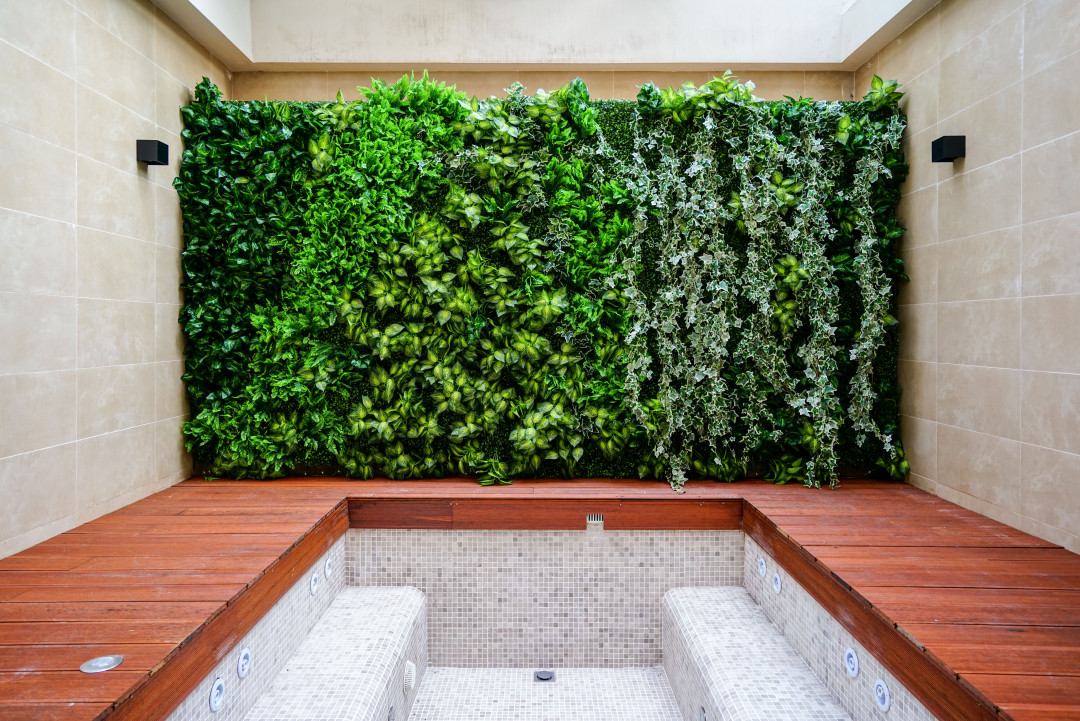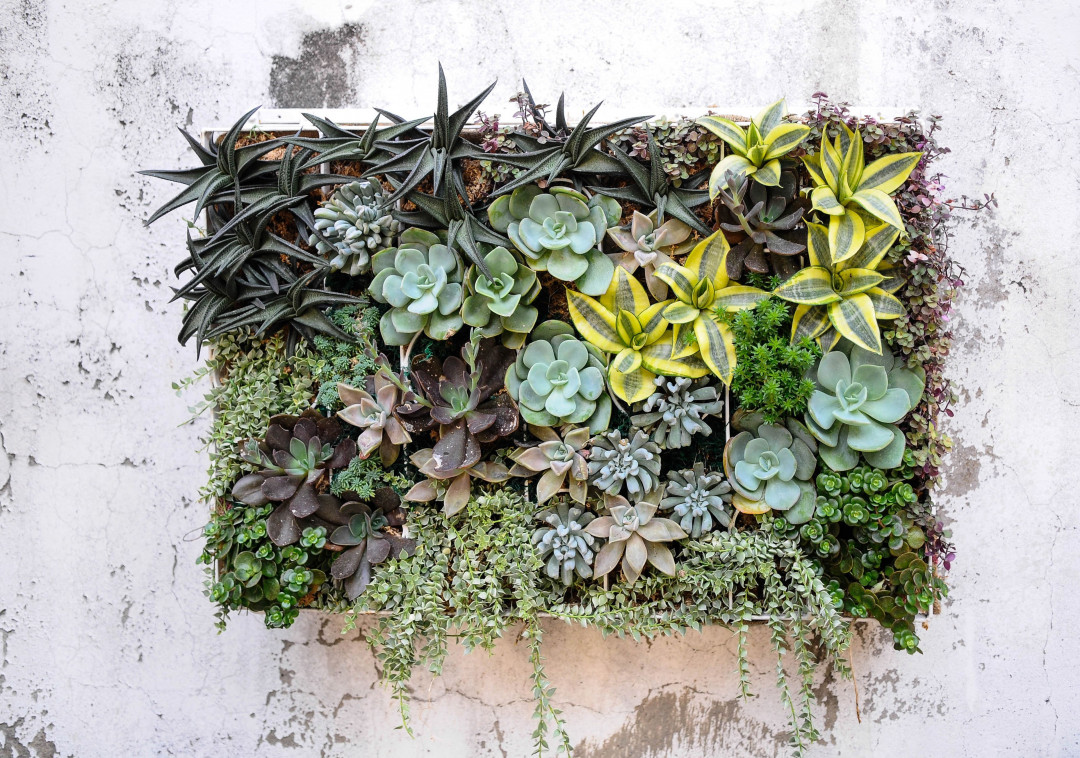Green Walls: Benefits of Bringing Nature Into Your Next Project




A green wall, also known as a living wall, is a vertical garden that is growing in popularity for both domestic and commercial building projects. There are many benefits to incorporating a green wall into your project, from adding natural beauty and bringing wildlife into the city, to reducing energy costs and improving air quality. In this article, we will explore the benefits of green walls in more detail and show you how to choose the right plants for your project.
 Combining natural elements of water and plant-life creates a relaxing atmosphere in this outdoor spa.
Combining natural elements of water and plant-life creates a relaxing atmosphere in this outdoor spa.
Reduces air pollution
One of the main benefits of green walls is that they help to improve air quality. Plants absorb carbon dioxide and release oxygen, which helps to purify the air around them. They also act as a natural filter, trapping dust particles and other pollutants. This can be particularly beneficial in cities, where air pollution is a major problem.
Blocks out noise
Green walls can also help to reduce noise pollution. The plants and soil act as a natural sound barrier, absorbing sound waves and reducing the level of noise. This can be beneficial for both commercial and domestic buildings, making them more peaceful and calming places to be. A green wall is a great feature for a meeting room, and will block out sound from the rest of the office.
 Making new friends is easy with a green wall.
Making new friends is easy with a green wall.
Contributes to biodiversity
Another benefit of green walls is that they can help to contribute to biodiversity. By incorporating a variety of plants into your green wall, you can create a habitat for local wildlife. Birds and insects will be attracted to the plants, and this can help to boost the population of these species in urban areas. This is also something you need to think about if you're a little squeamish; bugs and insects are a beneficial and necessary aspect of any gardening.
Reduces energy costs
Green walls can also help to reduce your energy costs. The plants act as a natural insulator, helping to keep your building cool in the summer and warm in the winter. This can save you money on your energy bills, and is better for the environment.
Courtesy of Good Studio via Shutterstock.
Improves mental health
Finally, green walls can also improve your mental health. Studies have shown that spending time in nature can help to reduce stress and improve your mood. Although a green wall won't be an accurate substitute for the real thing, having a tactile and sensual connection with plants through sight, smell and touch will be enough to get you through your day.
Choosing plants for your green wall
Now that we've seen the benefits of green walls, let's take a look at how to choose the right plants for your project. There are many factors to consider, such as the climate, the amount of sunlight and the level of maintenance required.
 Succulents are the perfect choice for a low-maintenance green wall.
Succulents are the perfect choice for a low-maintenance green wall.
Looking for a low-maintenance option? Succulents are a great choice. These plants are able to store water, so they don't need to be watered as frequently as other plants. They also don't require a lot of sunlight, making them ideal for shady areas.
If you're looking for a plant that will provide some privacy, evergreen plants such as ivy or ferns are a good option. These plants will stay green all year round, and will provide a dense barrier that is difficult to see through.
If attracting local wildlife is your prerogative, native plants are a great choice. These plants are adapted to the local climate and environment, so they will be more likely to thrive. If you want to take it one step further, you can take up urban beekeeping and contribute to the biodiversity of your neighbour’s gardens as well!
Looking to add green walls and vertical gardens to your project? See the range of products and technical information available on Archify.




 Indonesia
Indonesia
 New Zealand
New Zealand
 Philippines
Philippines
 Hongkong
Hongkong
 Singapore
Singapore
 Malaysia
Malaysia








